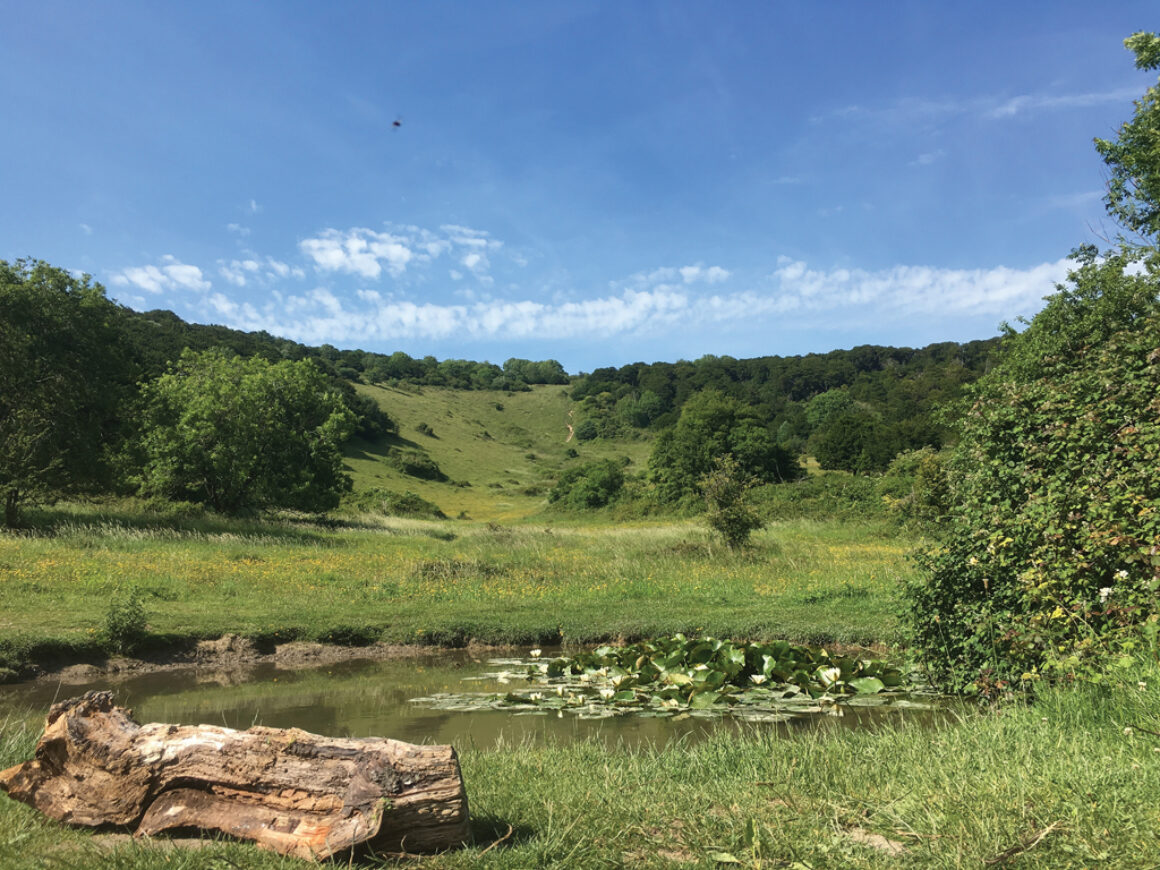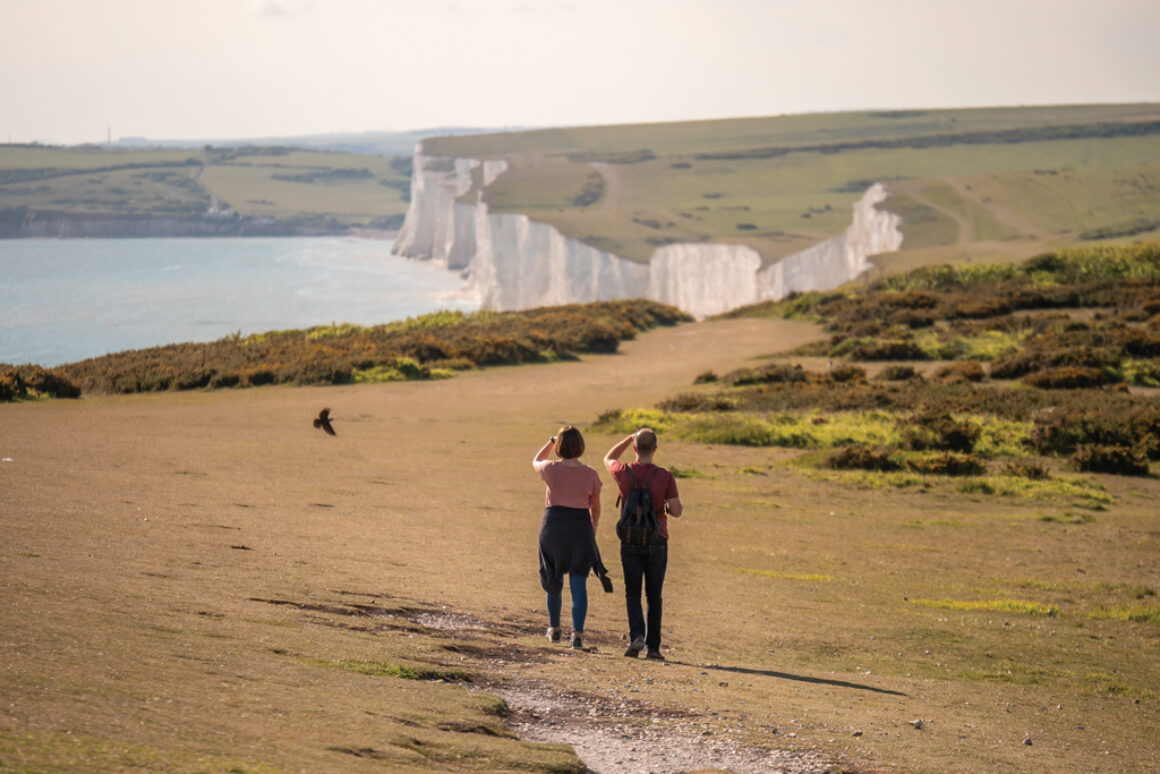A walk in the woods – South Downs National Park
Centuries of human habitation have shaped the South Downs National Park, yet the landscape still dictates where people can live and work the land. Some of the earliest settlements in the South Downs date back more than 5,000 years. It’s been a place of worship for centuries, nurturing a spiritual and emotional connection in those who spend time here.
Walking along the 100-mile length of the South Downs — from Winchester to Eastbourne, culminating in the iconic chalk cliffs at Seven Sisters, it’s not hard to find an inspiring view.
Seven Sisters
The rippling wall of chalk stretching to the horizon at the Seven Sisters must be one of the most photographed British landmarks. These monolithic peaks and dips are the remnants of dry valleys, which are gradually being eroded by the sea.
A walk from Beachy Head takes in the impressive chalk cliffs of the Seven Sisters and looks inland from the UK’s highest coastal point across the gentle, rolling chalk downs and valleys. A little further along is Birling Gap, one of the longest stretches of unspoilt coastline in the south.
Devil’s Dyke
Just north of Brighton is Devil’s Dyke — the longest, deepest and widest ‘dry valley’ in the UK and boasts one of the most impressive views of the entire South Downs National Park.
Venture into the valley during spring or summer and you’ll be walking on a living carpet of flowers, orchids, wild thyme, horseshoe vetch and birdfoot trefoil. John Constable described the panorama from Devil’s Dyke as ‘the grandest view in the world’.
Blackdown
The highest point in the South Downs National Park, Blackdown Hill is a landscape of wavy hair grass, purple heather and pine trees that leaves you with a true sense of wildness.
These timeless views have inspired many, including Lord Tennyson himself who’d seen traders, shepherds and chert quarrymen who have been using these tracks for thousands of years.
Kingley Vale
There’s a magic about Kingley Vale. Maybe it’s the twisted trees that look like they’re straight from a Lord of the Rings movie. The reserve contains one of the finest yew forests in western Europe, including a grove of ancient trees which are among the oldest living things in Britain and is one of the most important archaeological sites in southern England.
Look out for green woodpeckers hunting for ants on the grassland, as well as red kites and buzzards.
Butser Hill
This is the highest observing point in Hampshire, with 360-degree views and, on a clear night, you can look up at the Milky Way in all its glittering glory. These unspoilt views of the cosmos have earned the National Park the status as an International Dark Skies Reserve.
The South Downs is one of only thirteen such Reserves in the world.
Cheesefoot Head
Situated just outside of Winchester in Hampshire, Cheesefoot Head is a natural amphitheatre. A stunning viewpoint, it offers views out towards Butser Hill, the New Forest and the Isle of Wight.
The sloping walls of the amphitheatre is comprised of chalk grassland and is home to wildflowers which attract pollinators of every sort. Bird life, like Corn Bunting, Yellowhammers and the Skylark, is abundant.
It also lays claim to playing an important role in WW2 where, prior to D‑Day, General Dwight D. Eisenhower addressed US troops who were often entertained by shows and activities hosted here.
From vast areas dominated by ancient woodlands to chalk grassland, peppered with wild-flowers and clouds of butterflies, the secluded slopes and remoteness of the South Downs National Park will beckon that you discover the ancient world within.

